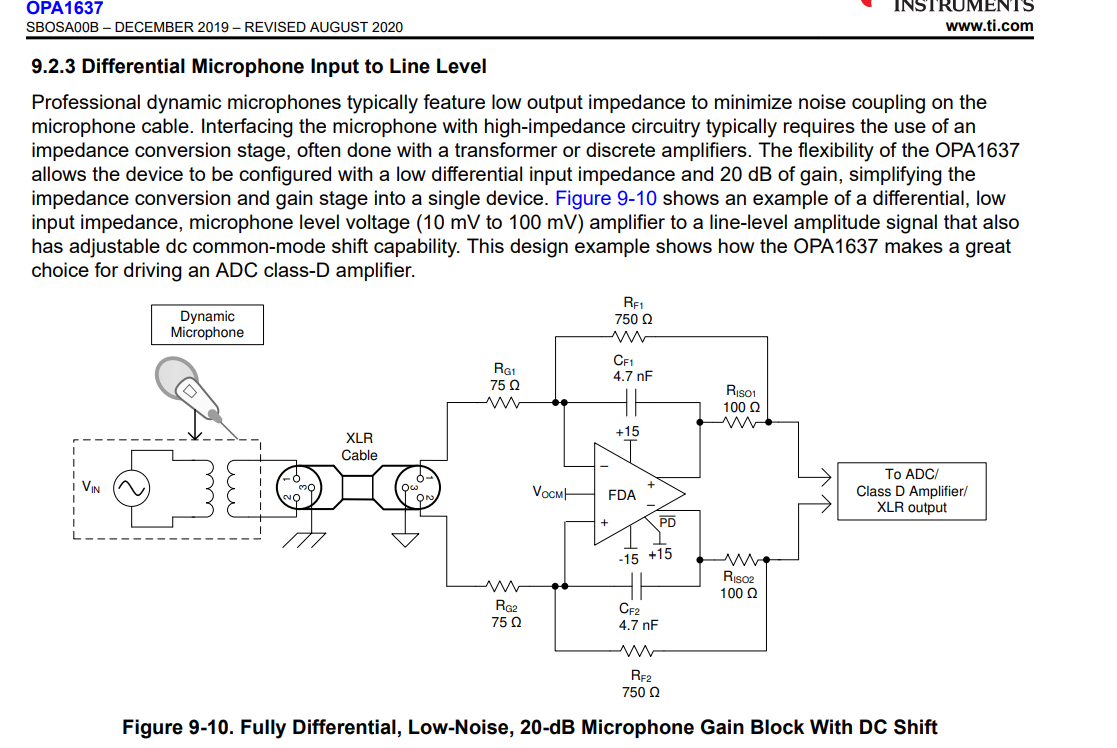- Ask a related questionWhat is a related question?A related question is a question created from another question. When the related question is created, it will be automatically linked to the original question.
This thread has been locked.
If you have a related question, please click the "Ask a related question" button in the top right corner. The newly created question will be automatically linked to this question.
Tool/software:
Hi Team,
Customer is trying to design the OPAMPs circuit for MEMS MIC output, and they are looking for a lot of OPAMPs for this design. So please review the attachment below and let me know the single and differential OPAMPs for amplification of their analog MEMS MIC output.
Regards,
Hey Jeffrey,
I am working on a simulation using the OPA1678 which is one more amp recommendation to the OPA1688 which is also a good suggestion. We also have the OPA1637 which is an FDA or fully differential amplifier that could be recommended. I will follow up tomorrow with my simulation.
Best Regards,
Chris Featherstone
Hi Chris,
Thanks for you response. Please let me know your recommended OPAMPs if your simulation is completed.
Regards,
HI Jeffrey,
You may consider using either the OPA1688 or OPA1678 as shown in the circuit below. I provided the Tina simulation as well. One thing to note is that component matching is important when building a discrete differential setup like this. Component mismatch can lead to CMRR errors. For this reason my other recommendation would be to use a fully differential amplifier such as the OPA1637.

OPA1637
The gain below is adjustable by adjusting the feedback and input resistors as would be done with a standard amplifier.

For single ended input you may consider a circuit configuration using audio op amps instead as shown here:
Best Regards,
Chris Featherstone
Hi Chris,
Thanks for your kind response. Let me check with customer about your recommendations.
Regards,
Hi Chris,
Customer concerns about phase difference of differential output signal such as OPA344. Please let me know how to resolve this issue.
Regards,
Hey Jeffrey,
The first op amp is just a buffer. So instead of connecting the second amp to the output of the first, the input of the of the second op amp can also be connected to the Vi input source. This comes with a trade off of lower input impedance. I have added the Tina simulation below as well.

Best Regards,
Chris Featherstone